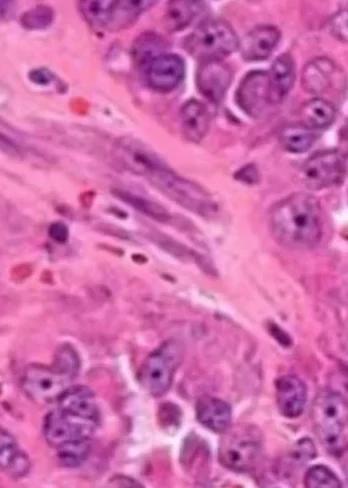Article
Next-Generation Sequencing Reveals Potentially Actionable Mutations in Sarcoma
Author(s):
February 18, 2021 — The use of next-generation sequencing demonstrated that 34% of patients with sarcoma had potentially actionable mutations.

The use of next-generation sequencing (NGS) demonstrated that 34% of patients with sarcoma had potentially actionable mutations, according to results from a retrospective analysis shared in a poster presentation during the 2020 Connective Tissue Oncology Society meeting.
In light of the results, treatment decisions for 8% of patients were altered, according to Brian Shulte, a fellow at Northwestern University.
One patient with Ewing sarcoma was found to have PTEN loss, and so they were given copanlisib (Aliqopa). Among 2 patients with leiomyosarcoma, 1 patient was found to have an ALK fusion and the other was found to have microsatellite instability–high disease; thus, these patients were given alectinib (Alecensa) and nivolumab (Opdivo), respectively.
Another patient with chondrosarcoma was found to have a tumor that harbored an IDH1 mutation, so they were administered treatment with ivosidenib (Tibsovo), while another patient with synovial sarcoma was found to have BRAF V600E–mutated disease, so they were given encorafenib (Braftovi).
Of 3 patients who had soft tissue sarcoma not otherwise specified (STS NOS) and underwent NGS testing were found to have CDK4 amplification, CCND1 amplification, and a NTRK fusion; as a result, the first 2 patients were given palbociclib (Ibrance), while the third patient received larotrectinib (Vitrakvi). One patient with myxofibrosarcoma was found to have high tumor mutational burden, and in light of this, they were administered atezolizumab (Tecentriq).
NGS is increasingly being utilized in the management of patients with sarcoma, although its exact role remains undefined. To gain further insight, investigators launched a retrospective analysis. Here, they set out to examine the use of this testing in this patient population and characterize the effect of the results on clinical decisions. They also wanted to qualify instances in which NGS was used to gain a better understanding on the incidence of mutation within a large population of patients with sarcoma.
Investigators utilized the Northwestern Medicine Oncoset Database to identify certain patients who were seen through the Northwestern Healthcare system, who had a tissue diagnosis of sarcoma and underwent NGS testing. The clinical course was interpreted by the investigators to evaluate the impact of the testing on treatment decisions. Mutations were cross referenced with ongoing tissue agnostic and sarcoma-specific clinical trials.
To be included in the analysis, patients had to be older than 16 years and have a histologically confirmed sarcoma diagnosis and have received NGS testing with the Foundation Medicine assay, the Tempus CDx assay, or the Guardant 360 assay.
A total of 117 patients were evaluated with assays that were performed between 2014 and 2020. The median age of participants was 55 years and 52% were female. One assay was used per patient (range, 1-4). Of the patients included, 31% had leiomyosarcoma, 18% had STS NOS, 11% had angiosarcoma, 9% had liposarcoma, and 31% had other. Among those who were tested with the Guardant assay, 25% did not have variants detected, versus 2% of those who received the Tempus assay.
When looking at the utilization of assays over time, it appears that testing surged in 2019 compare with the other years examined. Among the actionable mutations identified NF1 mutation, PTEN loss, and CDK4 amplification were most prevalent, followed by IDH1 R132C, MET amplification, INI1 deficiency, PIK3CA mutation, BRCA2, STK11 mutation, NTRK fusion, FGFR1 amplification, CCND1 amplification, CCND3 amplification, FOXP3, SETD2, ALK fusion, BRAF V600E, TSC1 mutation, TSC2 mutation, KRAS G12C, BRCA1, FGFR2 amplification, ERBB2 amplification, PTCH1 mutation, and FGFR1 mutation.
Moreover, the incidence of actionable mutations was found to increase over time.
Reference
- Schulte B, Katam N, Behdad A, et al. Impact of next-generation sequencing (NGS) on the treatment of patients with sarcoma. Presented at: 2020 Connective Tissue Oncology Society meeting; November 18-21, 2020; Virtual. Poster 106. https://bit.ly/3pBNTJu








